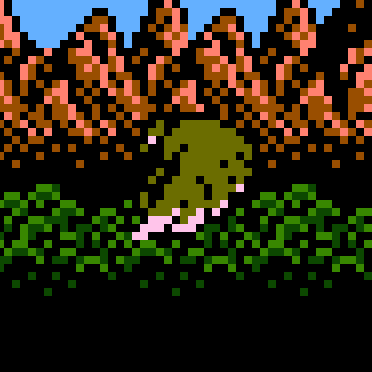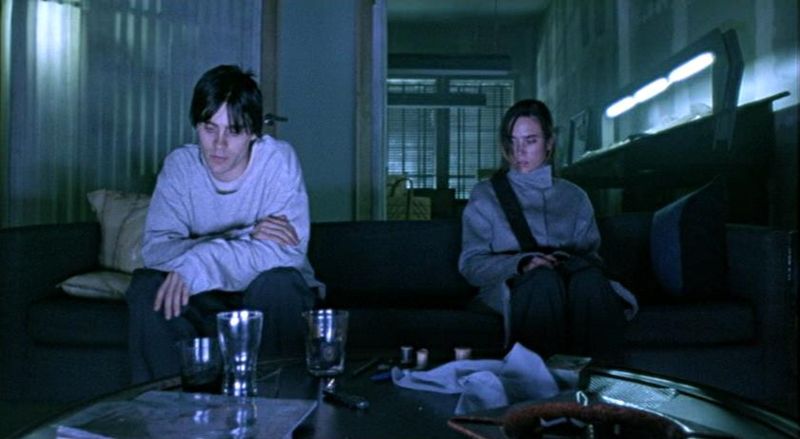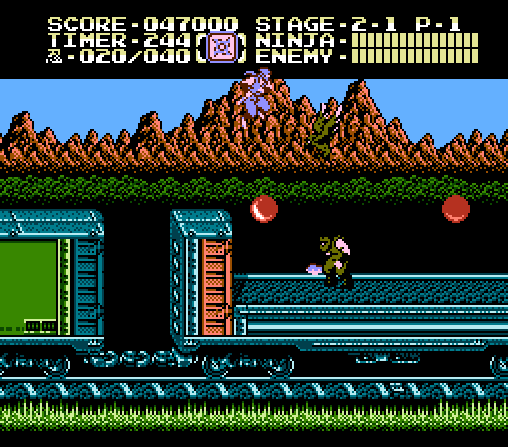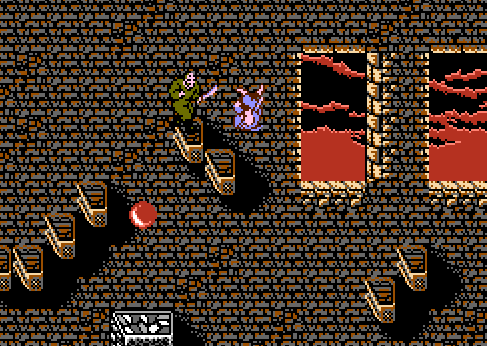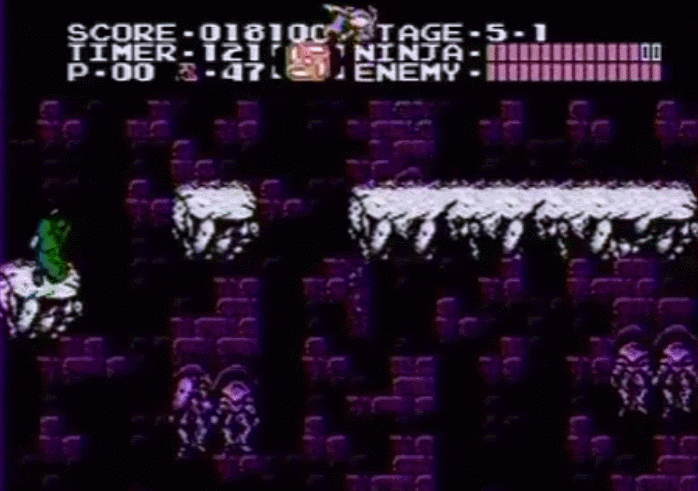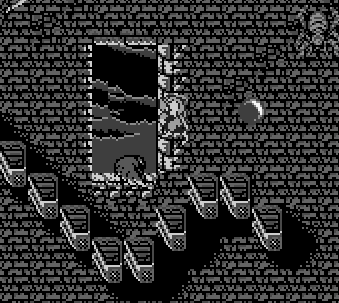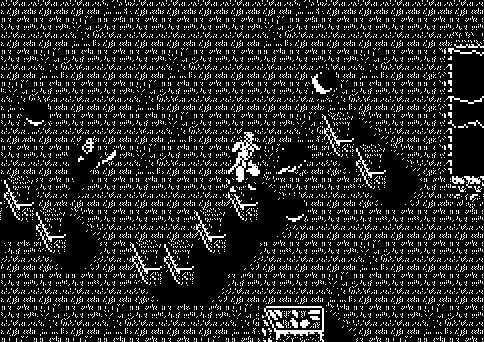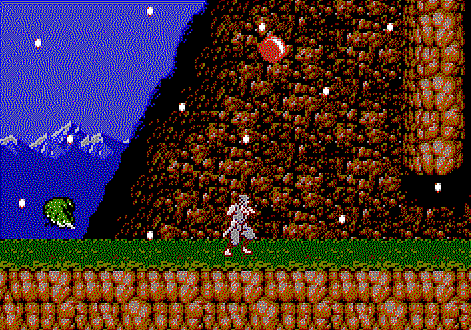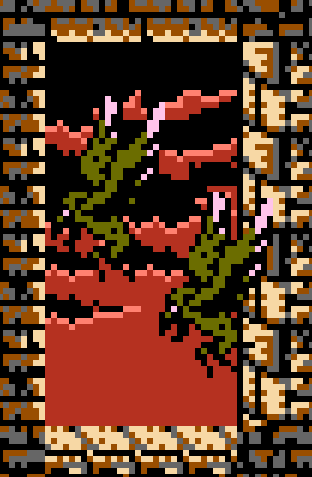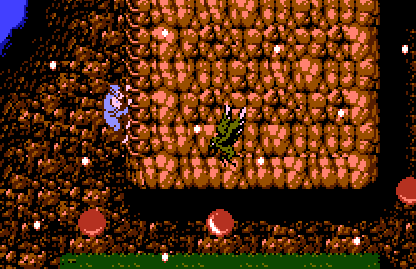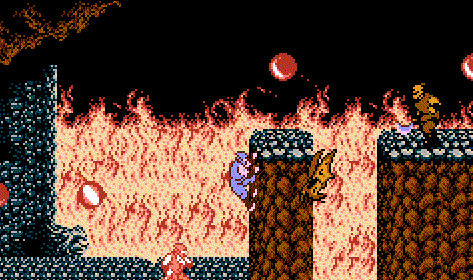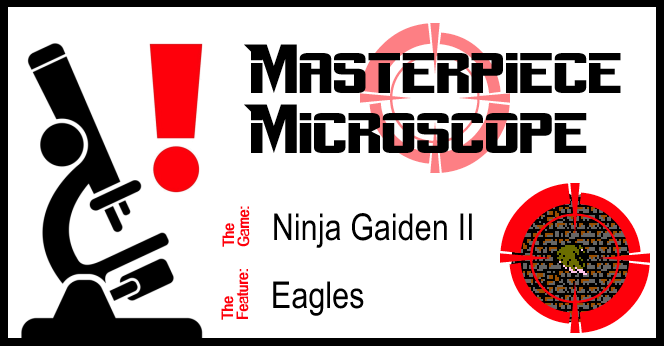
Masterpiece Microscope
Ninja Gaiden II Eagles
Masterpiece Microscope is a series in which I choose one great video game, then focus intensely on a single specific feature of its gameplay. Upon close examination, we may gain new insight as to just how great the game is, along with a better appreciation for the quality work that went into every little detail.
Quick: When I say “fast-paced NES action game,” what do you think of?
I tried posing that inquiry on Twitter, and was pleasantly surprised (considering that I already had this feature in mind) to see that several different people responded with “Ninja Gaiden.” I did not even specify the NES at all, but I am willing to bet confidently that this was the version they had in mind.
This speaks to a great truth about the Ninja Gaiden series as a quality set of arcade-style (or literal arcade) experiences. Their reputation has persisted for a generation. Although opinions do differ, the generally accepted wisdom is that Ninja Gaiden II is the best of the 8-bit trilogy, or at least not the worst of the bunch.
Which brings us to a little disclaimer I feel the need to include here: Although I am framing this feature from the perspective of the sequel, this particular nefarious element appears elsewhere in the canon as well. The same commentary is going to apply, regardless of which Gaiden game this annoyance pops up in. And what am I referring to, you may ask?
The eagles.
Those damn eagles.
Now, at this point, I can totally understand if you are thinking, “What the hell, Eric?! Those eagles are one of the most annoying parts of any game ever! They are literally one of the most frustrating things in video game history! Why would you focus on the worst aspect of a great game when you are trying to quantify its greatness? That would be like praising Resident Evil, but only through the lens of its voice acting! Mortal Kombat, but only through the Game Boy port!”
Not quite. Stay with me. I promise, there is a method to my madness – an intelligence to my insanity.
Before we can discuss our topic, we must have a conversation about the nature of art.
How do you feel when you view Guernica, the painting by Pablo Picasso?
How do you feel when you watch Requiem for a Dream, the film by Darren Aronofsky?
How do you feel when you listen to Hurt, as performed by Johnny Cash?
If your answer is “happy,” you may be a sociopath.
Critical opinions of these selected pieces aside, it would be difficult to argue the point that one key ingredient to artwork is its capacity to affect us emotionally. It is important to make the distinction, then, that this applies whether that effect is positive or negative. Just as we have comedy, we have drama, and have had both of those for as long as human culture has shared screenplays, poetry, oral narratives, etc. Sometimes the fact that something can make us feel awful does not make that Something awful itself; rather, it makes it very effective, and of high quality.
I am not trying to break any new ground on the tired are-games-art arguments, but rather merely trying to place a backdrop here against which we can really examine the greatness of Ninja Gaiden II: The Dark Sword of Chaos (NES). By focusing intently on its most heinous creature, we can better clarify the whole, and sublimate our experience therein; or, at least, our perspective of it.
In other words: We know Ninja Gaiden II is very good, through and through, but we may not realize that the eagles enhance this greatness, rather than detract from it. Art can alter us in horrifying ways. True power is in terror. And what better example of terror do we have in gaming lore than in of its most chilling beasts?
We first encounter the eagle in stage 2-1.
Now, this choice is a little brilliant. We are easing into the game, rolling along its smooth curve of difficulty. In the first act, we never met our avian nemesis as we traipsed about the initial cityscape. Here, we have our introduction, atop the cars of a train. This is a gentle peek at what will become the stuff of nightmares.
You may notice something missing here, that very definite item that makes these birdies all the more evil as the gameplay progresses. What is absent here?
Gaps.
You see, on the train, you cannot fall to your death. There is no gap between the paths of solid ground, only changes in elevation. Even between the cars, you can stand on the linking chains. You are free to deal with the birds on your terms, and take leaps of faith that require little faith whatsoever. Your jumps, at this point, are hardly death-defying. A stray bump, with that infamous knockback, will not send you to your doom. Or, at least, not in the sense of a bottomless pit.
Thank you, Ninja Gaiden II, for giving us a simple crash course before we hit the main event.
Subsequently, Those Damned Eagles become much more of a legitimate cause for concern. Another reason we are focusing on Ninja Gaiden II is because I feel that you can witness the eagles’ carnage sufficiently in the Angry Video Game Nerd’s video on the original Ninja Gaiden (NES). Additionally, his video is a fantastic watch because he does a terrific job describing why the NES titles are so great, as they have stripped away the slogging beat-’em-up aspects of the arcade original and resorted to an adrenaline-pumping, fast-paced, hack-‘n’-slash, balls-to-the-wall, hold-nothing-back challenge. Seriously, click the link and listen to the Nerd describe how the respective pieces of Gaiden combine to form an intoxicating, addictive formula, that includes the seemingly impossible enemies.
Rest assured, however, that those birds are an adequate obstacle in II as well. As we continue to combat them throughout Ryu’s epic quest, we witness their behavior and patterns. We learn their ways. We come to a place of relative knowledge concerning their traits and characteristics. We realize how frightening they are, yet also how well-designed as antagonists, too. For every accusation of being “cheap,” what we actually experience are the myriad ways that Ninja Gaiden II is elevated to the very plateau of worthy retro gaming gauntlets. Without these flavors of pain along the way, the eventual triumph would not be nearly as sweet.
Pop In
Ah, the pop-in phenomenon! How I look forward to the day when Joshua feels up to the task of tackling this topic in his very enjoyable RetroHate column. For a quick refresher, consider checking out Pat the NES Punk’s video review of Amagon on NES. Pat and I may have our differences in review philosophy, but he does an excellent job there of breaking down Amagon for in-depth analysis.
At first glance, it really does seem like this eagle appears from of nowhere. Upon closer examination, we see a somewhat cooler, more thoughtful origin: That bird is blasting in through the window, folks. C’mon, give the level designer some credit, that is a nifty dramatic touch. Almost as dramatic as the ones that burst forth straight from the depths of Hell.
Bad dream, here I come. Actually, I should add a fair note here: This animation is from the first Ninja Gaiden, from AVGN’s video in fact. But you get the point: Enemies that arrive from no clear point of origin offer even a skilled player less time to react or coordinate any kind of effective defense. A ninja must truly possess lightning-quick reflexes to conquer these moments of Sudden Eagle.
Regeneration
These flying fiends are not content just to be borne from the bowels of the underworld, no: They must also be immortal, resurrecting eternally at will.
I do not think I need to spend much space explaining why this increases the level of challenge involved with beating the birds. When your most-feared foe comes back from the dead, lesser men may ragequit at such a sight. Granted, this regenerative force is not seen in every appearance. Somehow, this may add to their diabolical nature even more; after all, if they always regenerated, at least they would be more predictable, in a way. As it is, you remain unsure of which moments will deliver resurrection and which will not. Good luck.
Motion
Look closely at how these diabolical monstrosities move.
So silky smooth, so hellbent on tracking the protagonist, so constantly threatening. Seasoned Gaiden players can see this arc of motion in their mind’s eyes: The way they swoop in with acceleration, the way they slow down in reverse at the edges of the screen, they way they bend the programming to accept their existence beyond the 8-bit boundaries, they way they rise to meet your climb, the way they dive to meet your descent.
As an animated sprite, this is high-quality execution. Their flight path is a not a rigid back-and-forth, up-and-down sort of mechanic, but neither is it a chaotic fit of random number generation. This is programmatic prey-stalking. This is a hunt. Really, the two clips above are not even the greatest examples — a longer sampling could show their relentlessness, while other shots may better highlight their utterly responsive capabilities. Blame my lack of skill, if you must.
There are not many enemies that move like this in video games from this era. When you do find a similar one, it is almost always among the more memorable; for example, the Phanto from Super Mario Bros 2 comes to mind.
Notice, too, how these .gif animations highlight just how problematic the eagles become when combined with other traits from Gaiden, such as pitfalls and knockback. They are more deadly when bottomless pits are nearby, and this is exactly because the protagonist is “knocked back” upon contact with any enemy. See, this synergy is important, toward understanding the perfect fit between the eagles and the greatness of Gaiden II. The eagles would not work as well in other titles. Can you imagine a foe like this in Double Dragon, or Rescue Rangers, or Teenage Mutant Ninja Turtles II? Even darn-good NES cartridges could not handle the eagles, for the most part.
This analysis works in reverse, too, if we stick to Ninja Gaiden II specifically but remove its elements. If there were no knockback, would the eagles be as significant? No way. You could just stand there and take their hits without any fear of death. You could be much less careful about your timing, your jumps, your sword swings. Yet, when we continue to examine the eagles more intently, we just continue to find more small rewards.
For instance, they even come in different colors, like the green variant seen here.
At some points, they even attack in pairs.
The designers were creative (cruel?) at other points, too, as they considered what unique in-level traps to pose to the player. They brainstorm situations, such as: Let’s put an eagle right by the ladder. Yeah, that’ll be fun.
Later in the game, the makers decide to let down all disguises altogether, and get to the core of the truth: These beings really are Hellspawn. Witness their true, demonic nature.
Yikes.
The eagles of Ninja Gaiden II are the epitome of an unforgettable video game enemy design. Remember, they are not a boss character. They are not even a mini-boss. But talk to anyone who has played their share of NES games, and they know exactly what you are talking about when you grumble about those dang birds. That is quite an impression to leave.
Yet perhaps what makes them truly remarkable, even decades later, is their synergy with their environment. Ninja Gaiden II is a beautifully difficult game; very hard, but very good. It boasts incredible pixel graphics, very tight controls, neat power-ups, fantastic level design, and other elements of a hallmark title. The eagles are a part of that legacy. Without the eagles, Ninja Gaiden loses a little of its luster. And without Ninja Gaiden, the eagles have no fitting home.
Let us recall those earlier counter-examples of the bad parts of otherwise-good games. The voice acting in Resident Evil? Dreadful at times. Yet, if it were improved, Resident Evil would be improved as well, if a bit less campy. The Game Boy port of Mortal Kombat? It is definitely a worse version of the 16-bit counterparts, for reasons both quantitative and quantifiable. If you seek a superior Kombat, go to the Sega Genesis cart.
These two areas do not have a real defense. The eagles in Ninja Gaiden II are not quite like this. Notice how they serve their function perfectly, and Ninja Gaiden II rises to new heights for it. You can hardly remove or alter the eagles and expect Gaiden II to benefit. They go hand-in-hand. Take one away, and other suffers.
Maybe at this point I am just finding different ways to reword the same basic point, but I still think it is fascinating. In a cheesy way, it is applicable to life in general. Maybe you have to know pain to appreciate the alternative. Sometimes what we hate is what shapes us. And often what we viewed to be the thorn in our side is actually what made us stronger all along.

